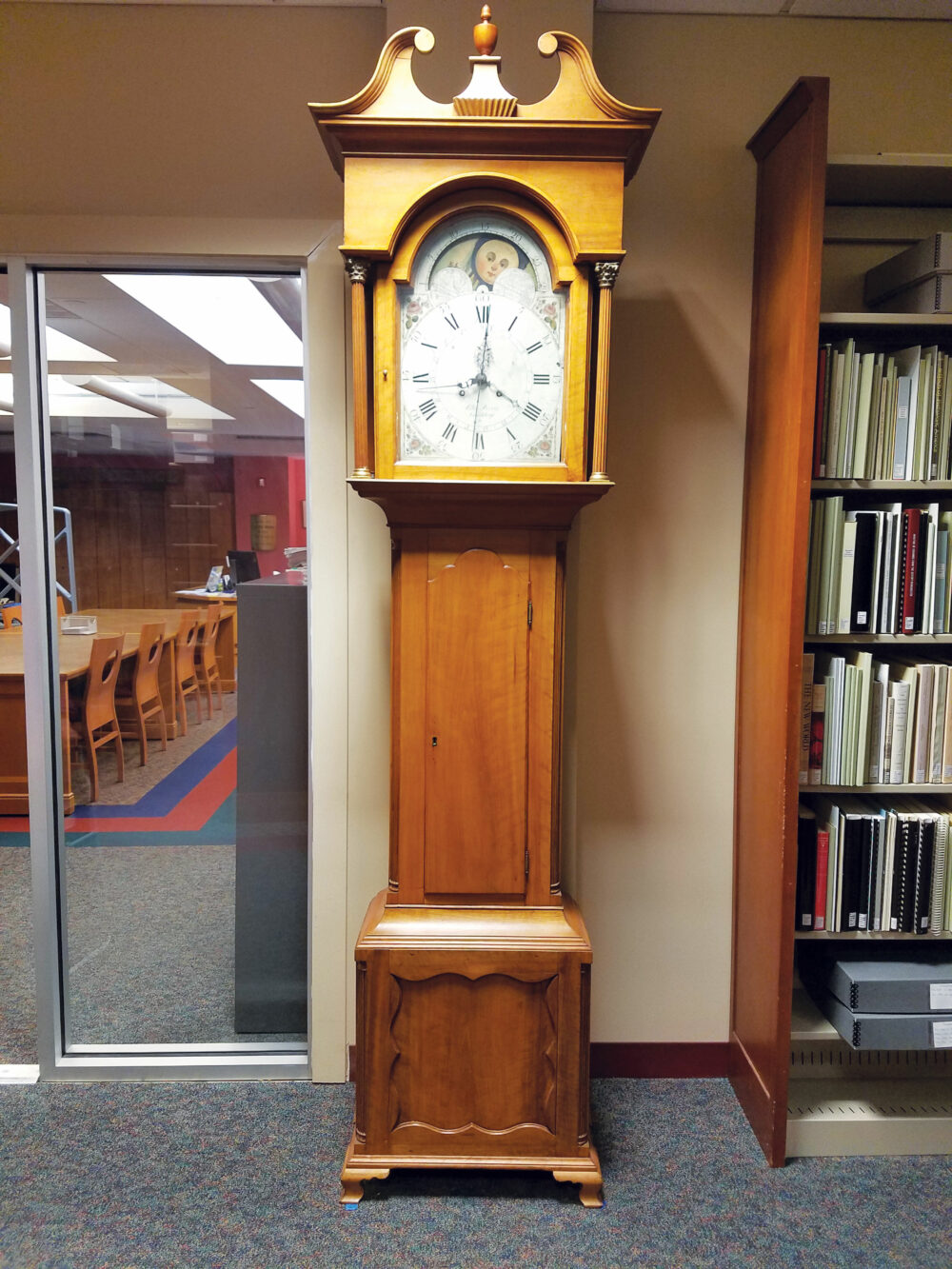Last month, I wrote about how a local Emmitsburg collector owned two Armstrong rifles, which had been crafted in town. The same collector owns an Eyster clock, and the Maryland Room at the C. Burr Artz Library in Frederick owns a Hoover clock.
John Hoover is believed to be Emmitsburg’s first clockmaker. He lived from 1771-1832, so his working years would make him a contemporary of riflemaker John Armstrong and Mother Elizabeth Ann Seton.
The John Hoover clock in the C. Burr Artz Library is a tall clock in a wooden case. Hoover signed the face: John Hoover, Emmitsburgh, 20.
The numeral indicates that it was Hoover’s 20th clock.
“The case is very well constructed, and it is interesting to note that both this clock and the Eyster tall clock show a similar Pennsylvania Dutch influence in the design on the base,” Mary B. Nakhleh wrote in Emmitsburg: History and Society.
Little else is known about Hoover, regarding his clocks. Luckily, much more is known of Andrew Eyster (1800-1872). According to Nakhleh, a local story is that a clockmaker named Bachman, who came from Waynesboro, Pennsylvania, trained Andrew in clockmaker and silversmithing. However, she also theorizes that, given their ages, it is possible Andrew Eyster learned his trade from John Hoover. Besides clockmaking and silversmithing, Andrew also earned a living as a jeweler. The Eyster shop was on the south side of West Main Street. He was also active in local government, serving as a town commissioner, burgess, and magistrate.
When Andrew died in 1872, his sons, George Edgar Taylor Eyster (1847-1914) and Hall Webster Eyster (1851-1927), took over the business, having been apprenticed to his father. At least one clock still exists that is labelled “G.T. Eyster & Bro., Emmittsburg.” According to Nahkleh, it has a double dial and a calendar dial that indicates day and month.
George was a Civil War Veteran. He had enlisted in the Army in 1864, and then signed up for Cole’s Cavalry in 1864, according to his obituary in the Emmitsburg Chronicle. “
Mr. Eyster was one of the few men who could boast of having heard Abraham Lincoln deliver that immortal address at Gettysburg at the dedication of the National Cemetery,” the Chronicle reported.
Like his father, George was active in civic affairs, although in his case, it was serving with the Vigilant Hose Company for 20 years as its captain.
George advertised his business in a way left little doubt as to what he did. “George T. Eyster has hung out, at his store, a large gilt watch, that indicates the time at 8:20 or 5:40 o’clock as you please to read it. It goes by swinging.” “This sign is still in the possession of the Eyster family,” the Emmitsburg Chronicle reported in 1883.
Although George was the Eyster name on the business, Hall seems to have had the talent. Andrew may have recognized this because he left all of his watch and clock making tools to Hall. Hall also held a patent for creating an improved clock movement frame. “The frame was designed so that the mainspring arbors could be removed without tilting or damaging the movement. The lower portions of the clock frame, both front and back plates, were constructed in three parts which were screwed together in such a way that the entire lower frame could be dismantled sectionally,” Nakhleh wrote.
A third son of Andrew Eyster was also a clockmaker. George’s older brother, John Thomas Eyster (1833-1921), is listed in Maryland Clockmakers as Andrew’s son and apprentice who worked as a silversmith, jeweler, and watchmaker.
Given the rich tradition of clockmaking in Emmitsburg, it’s a shame that more Eyster and Hoover timepieces haven’t survived.
(left, below) Hoover Clock in the Maryland Room at C. Burr Artz Library.


